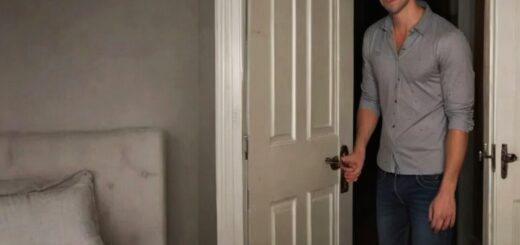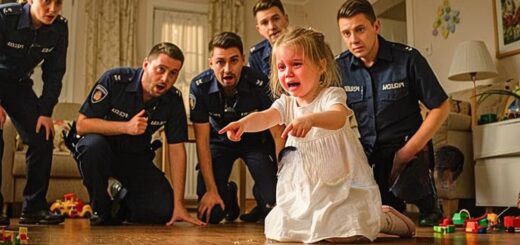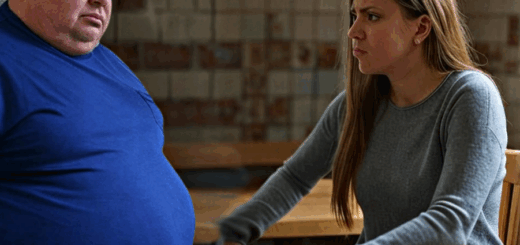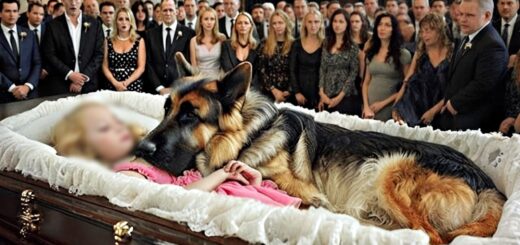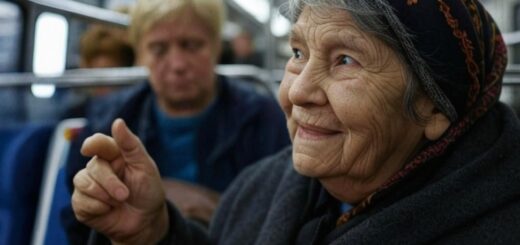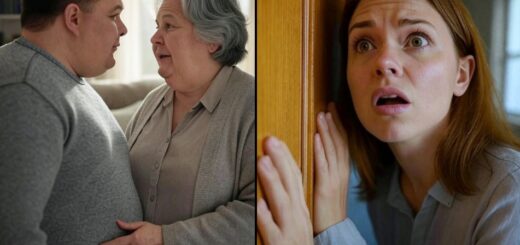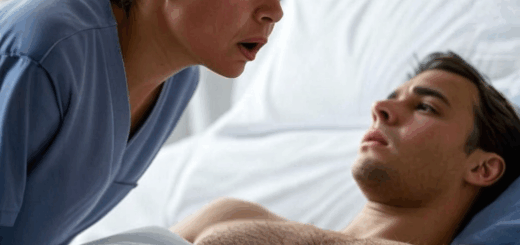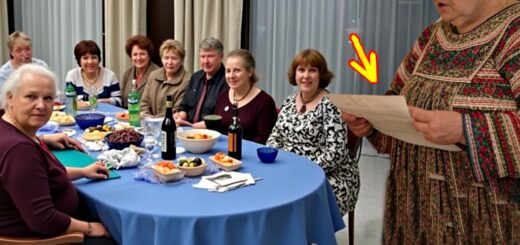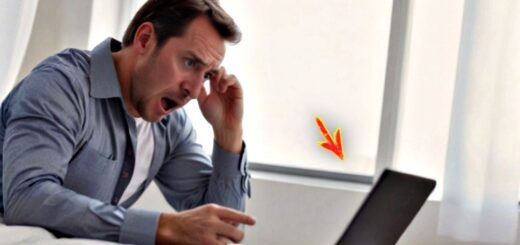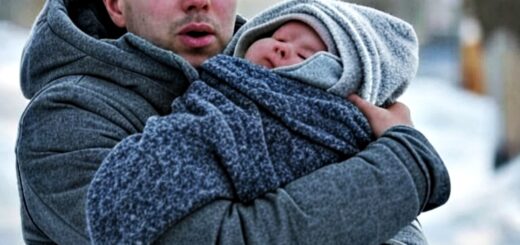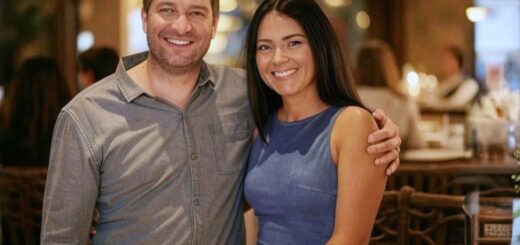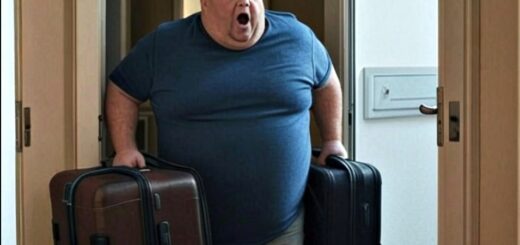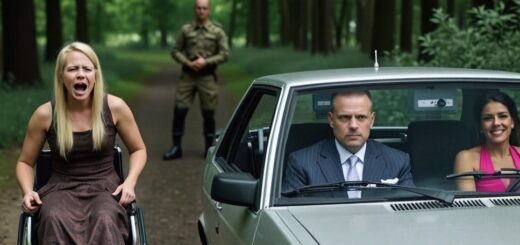“Don’t go to your husband’s funeral. Check your sister’s house…” That’s the letter I got on the day we were burying my husband. I thought it was some sick joke, but I decided to stop by my sister’s place anyway—I had a key. And when I opened the door, I was stunned by what I saw…
There were just too many facts, too many coincidences. On the day of the trial, I arrived at the courthouse calm and composed. With me was my new lawyer, a sharp young woman who specialized in fraud cases.
Brenda showed up with a whole team of attorneys. She looked better than she had a week ago, her hair done, dressed in a tailored suit. But I could see her hands shaking.
The courtroom was packed with journalists and spectators. Everyone wanted to witness the climax of the scandal. The judge, an older woman with a stern face, called the session to order.
Brenda’s attorney began with the accusations, said I had stolen documents, faked recordings, slandered a dead man’s name. He submitted psychiatric reports claiming I wasn’t mentally sound. My lawyer pushed back.
She presented expert analysis confirming the recordings were real. She showed photographs from the cabin, including fingerprints that matched Patrick’s. Then she requested to play a video.
The one of Patrick leaving Brenda’s house. The judge approved. They turned on a big screen in the courtroom.
Everyone watched as Patrick appeared in disguise, wig, fake beard. Watched him look around, remove the mask, and get into a car. The courtroom was silent.
Brenda’s attorney tried to object, claiming the video could have been faked, that modern tech could create anything. But my lawyer was ready. She presented a forensic analysis proving the footage was authentic, with no signs of tampering.
Then she read witness statements, neighbors who had seen Patrick at Brenda’s home, store clerks who recognized him. Brenda sat pale and motionless. Her attorneys whispered urgently to her, but she didn’t respond.
Finally, the judge called for a recess, saying she needed time to review all the evidence. During the break, reporters swarmed me, asking how I felt, if I was prepared for any outcome. I answered calmly.
I said the truth was on my side and I wasn’t afraid of the verdict. Meanwhile, Brenda sat in a corner of the courtroom, her face in her hands, crying. Her lawyers tried to comfort her.
An hour later, the judge returned. Her expression was serious. She announced that after reviewing all the case materials, the evidence I had presented raised serious questions.
The defamation case was officially dismissed. In its place, a new case was opened, on fraud and document forgery. She ordered a full investigation into the circumstances of Patrick Whitaker’s death.
Expert analysis would be conducted, witnesses interrogated, documents verified. The courtroom erupted. Journalists shouted questions, cameras flashed.
Brenda stood up and tried to leave, but reporters surrounded her. She shoved through the crowd and ran. I stayed until the end, answering journalists’ questions, giving comments.
I said I welcomed the court’s decision. That finally, the truth was coming to light. That evening at home, I watched the news.
Every channel was covering the case. They showed footage from court, played expert commentary. One analyst said it might become the trial of the decade.
If all the allegations were confirmed, many people could be implicated. I turned off the TV and walked into the kitchen. I made tea and sat by the window.
Outside, the world looked normal, people coming home from work, kids playing, dogs barking. But my life had changed. I was no longer the crazy widow making up stories.
I was the woman who exposed a monstrous fraud. Then the phone rang. It was Sandra.
She congratulated me, said she was proud. That not everyone could have endured what I had. She told me reporters had contacted her too, asking about Patrick’s other victims.
She agreed to give an interview. Said people needed to know what he was capable of. After we hung up, I realized, this was just the beginning.
The investigation would be long and complicated. Patrick had to be found and arrested. Brenda held accountable.
But the most important part had already happened. The truth was out. People now knew what had really happened.
I wasn’t fighting alone anymore. Three days after the court’s decision, two investigators came to my house. Two men in suits with stern faces.
They showed their badges and said they were working the tied to the faked death. The senior investigator explained that, based on the evidence I provided, a criminal case had been opened. Patrick was now officially wanted for large-scale fraud.
They asked if I had any idea where he might be hiding. If I knew of other hideouts, contacts, or documents. I told them everything I knew, about the country house, the fake passports, the web of doctors and lawyers.
The investigators wrote down every word I said. They told me this was a serious case, that many people might be affected, and that they needed my full cooperation. I agreed to everything.
I signed a formal request to open a criminal case and gave my consent to participate in the investigation. The next day, I was summoned to the prosecutor’s office to give a full statement. I recounted everything from the first suspicious letter to discovering the secret surveillance room.
The prosecutor listened attentively, asking detailed questions, especially about the financial schemes, the life insurance, the will, and the frozen accounts. After the questioning, he said the case would soon go to trial. That Patrick would be found and held accountable.
That same evening, the news broke, Patrick had been arrested at the border with fake documents. He was trying to flee the country but was stopped at customs. I watched the footage of his arrest on TV, Patrick in handcuffs, pale and stunned.
He looked nothing like the confident man I used to know. Reporters were shouting questions at him, but he stayed silent. Just once, he looked into the camera, and I saw fear in his eyes.
The next day, Patrick was brought before the court for a pre-trial detention hearing. I went to see him face to face. The courtroom was packed with journalists and spectators.
Everyone wanted to witness the man who had faked his own death. He entered the courtroom in handcuffs, dressed in a prison uniform, unshaven, his eyes lifeless. When he saw me, he turned away.
The prosecutor read the charges, fraud, document forgery, psychological manipulation. The list was long. Patrick’s lawyer requested house arrest, claiming his client wasn’t a threat to society and was willing to cooperate.
But the judge didn’t budge. He ordered two months of pre-trial detention, citing a risk of flight and witness tampering. They led Patrick away without him ever lifting his head.
After the session, journalists crowded around me, asking how it felt to see my former husband under arrest. I answered honestly, that I felt relief. That finally, justice was being served.
But the hardest part was still ahead. The next day, I got a call from the hospital. Brenda had been admitted to intensive care after a suicide attempt.
She’d taken a large dose of sleeping pills. I went to the hospital, though I wasn’t sure why. Maybe it was curiosity.
Or maybe pity. Brenda lay in the ICU, pale, tubes in her nose, hooked up to monitors. She looked like a ghost.
The doctor said her condition was stable but serious. She had taken a lethal dose, but the neighbors found her in time. I stood by her bedside, staring at the sister who had betrayed me.
I felt a strange mix of sorrow and anger. Brenda woke up on the third day. When she saw me, she burst into tears.
She begged for forgiveness, said she never meant to hurt me. But I couldn’t forgive her. Too much had been done.
Too far had it all gone. The doctor said that after she was discharged, she would be transferred to a psychiatric hospital. That she needed treatment for depression and suicidal behavior.
A week later, I got a call from the bank. They told me the freeze on my accounts had been lifted, I could access my money again. I went in and saw how much had built up while the accounts were locked, salary deposits, interest payments, even some of the insurance funds that had been transferred before Patrick’s arrest.
The first thing I did was hire a top-tier lawyer. A woman with an excellent reputation who specialized in family law. She told me we needed to file for divorce immediately.
With Patrick in custody, the process would move faster. We submitted the paperwork that same day. Grounds, fraud, emotional abuse.
The lawyer explained that the divorce wouldn’t be easy given the complexity of the case. But we had all the evidence we needed. At the same time, we filed a civil suit for emotional damages, compensation for psychological trauma, loss of employment, and damage to my reputation.
The amount we demanded was significant, $2 million. News of my lawsuit spread quickly throughout the city. Reactions were mixed…

